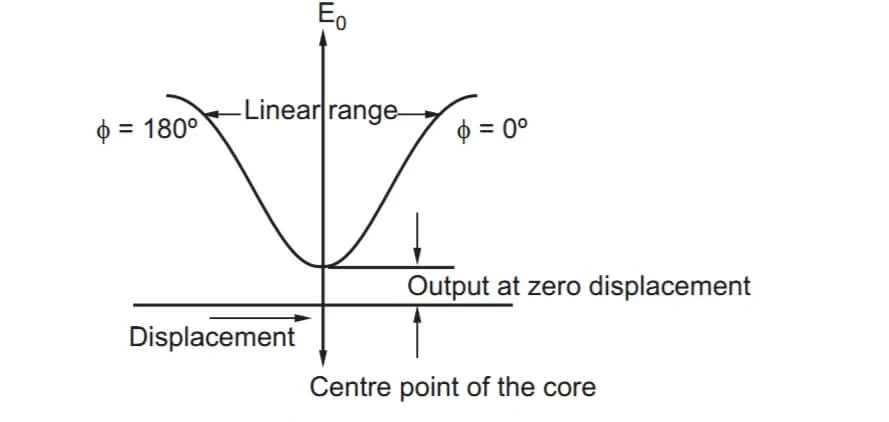The Linear Variable Differential Transformer (LVDT) is most widely used inductive transducer to translate linear motion into electrical signal.
Principle of LVDT
• The differential voltage of two secondary windings of a transformer is varied by positioning the iron core through an externally applied force.
Construction of LVDT
• A differential transformer consists of a primary winding and two secondary windings.
• The windings are arranged concentrically and next to each other.
• They are wound over a hollow bobbin which is usually of a non-magnetic and insulating material shown in Fig.
• A ferromagnetic core in shape of rod or cylinder is attached to the transducer sensing shaft.
• The core slides (i.e. moves) freely within the hollow portion of the bobbin.
• An A.C. excitation is applied across the primary winding and the movable core varies the coupling between it and the two secondary windings.
Working of LVDT
• Any physical displacement of the core causes the voltage of one secondary winding to increase while simultaneously reducing the voltage in other secondary winding. The difference of the two voltages appears across output terminals of the transducer and gives measure of position of core and hence the displacement.
• When the core is in the neutral or zero position voltages induced in the secondary windings are equal and opposite and the net output is negligible.
• As core is moved in one direction from null position, the differential voltage i.e. the difference of the secondary voltages, will increase will maintaining an in-phase relationship with the voltage from input source.
• In the other direction from the null position, the differential voltage will again increase, but will be 180° out of phase with voltage from input source.
• By comparing the magnitude and phase of the differential output voltage with the input source the amount and direction of movement of the core and hence the displacement may be determined.
Residual Voltage:
• Ideally, the output voltage at null position should be equal to zero. But in actual practice there exists a small voltage at the null position.
• This is because of presence of some harmonics in the input supply voltage and also due to harmonics produced in the output voltage on account of use iron core.
• The reason for this is, either an incomplete magnetic or electrical unbalance or both which result in a finite output voltage at the null position.
• This finite residual voltage is generally less than 1% of maximum output voltage in the linear range.
• Also, the reason for residual voltages will be stray magnetic fields and temperature effects.
• Thus, the voltage produced at zero displacement is called Residual voltages as shown in Fig.
By using belt a.c. sources, the residual voltage can be reduced no almost at a negligible value.
Advantages of LVDT
(i) LVDT have a very high range for measurement of displacement.
(ii) Friction and electrical isolation.
(iii) Immunity from external effects.
(iv) High input and high sensitivity.
(v) Ruggedness.
(vi) Low hysteresis.
(vii) Low power consumption.
Disadvantages of LVDT
(i) Large displacement requirement.
(ii) Sensitive to stray magnetic fields but shielding is possible.
(iii) Temperature affects the performance of the transducer.
(iv) The frequency of carrier must be atleast ten times the highest frequency component to be measured.
Applications of LVDT
(i) LVDT can be used for displacement measurement ranging from fraction of a mm to a few cm.
(ii) Acting an secondary transducer, used to measure force, weight and pressure.


